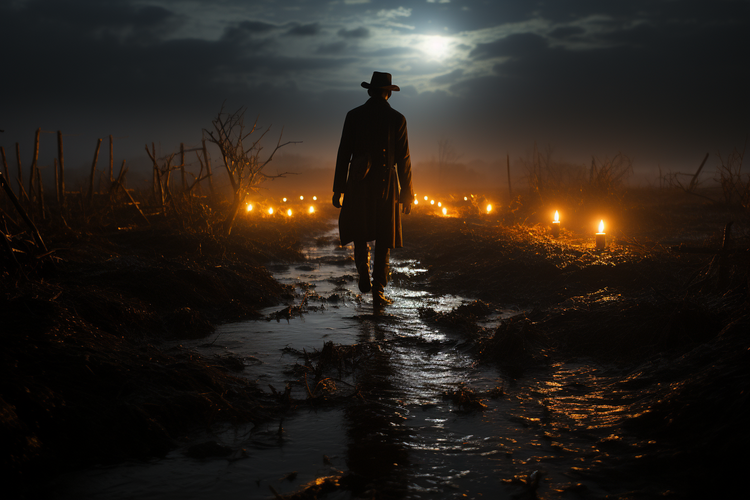The Twisted History of the Jack-O'-Lantern's Haunting Origins
Greetings, dear friends! As we draw closer to All Hallow's Eve, let us explore the shadowed history of an iconic symbol—the jack-o'-lantern.
Those flickering faces upon our porches have origins far darker than current festivities suggest. We must peel back the pulp to reveal the grim folktale intertwined with religious rites and cultural traditions that spawned this ghoulish guardian of Halloween night.
As a learned scholar of phantasmal folklore, I have gathered what scraps I could find regarding the jack-o'-lantern's origins. It seems across the British Isles for centuries, turnips and beets carved like grotesque visages were placed in windows to repel wandering evil come All Hallow's Eve.
Some records indicate this practice extends even earlier, as pagan rituals utilized carved vegetables to represent protective spirits or deter mischievous fairy folk as the year turned to darkness. Here we see an intriguing crossroads between ancient pagan beliefs and modern Halloween iconography.
It was not until the early 19th century that more detailed accounts emerged specifically linking the practice to a restless soul named "Stingy Jack." This infamous trickster beguiled even the Devil through clever manipulations and dishonest bargains. Damned to endless roaming after death, Jack bartered for an ember to light the way, which he placed inside a turnip to create a ghostly lantern.
In life, wicked Jack tricked the forces of Hell by exploiting pride and desire. He persuaded the Devil to take coin form to pay for libations, then pocketed the transformed Devil alongside a crucifix to trap him. Freedom required the Devil vow to never claim Jack's soul.
Later, Jack goaded the seething demon up an apple tree and carved a cross in the bark before he would let Satan climb down. Once more, the Devil had to guarantee not to take Jack's soul after death for another decade. This bought Jack time, but sealed his fate.
When finally the reaper came, Heaven rejected Jack's sinful life. And the Devil abided the sworn oaths that barred Jack's spirit from Hell. Thus, his ghost was left directionless in the darkness with no eternal rest.
Only the smoldering ember granted by the scorned Devil allowed clever Jack to illuminate his aimless wandering. Placed in a hollowed turnip from his pocket, this hellfire coal became "Jack's lantern," warding off darkness and lighting mischievous tricks. Now known as “Jack of the Lantern” which evenually became “Jack O’ Lantern”
The Irish likened these ghostly lights bogging lost souls to "will-o’-the-wisps," flitting aimlessly through the night. Some believe all Western tales of haunted lanterns tie back to the damned Jack's legend. His story immortalized the carved turnip lantern's role in Samhain rituals.
When Irish immigrants sailed West in the 19th century, they brought this sinister lore with them. Finding pumpkins more abundant than turnips, they adopted the sturdier squash for carving frightful faces, combining Old World myths and New World gourds.
Jack's haunting persistence became forever linked to the Halloween pumpkin. So as you gather round the pumpkin patch this October, remember the faustian fool who inspired this practice and still roams endlessly between worlds in his pursuit of vindictive tricks. A reminder that mortal greed often bears a terrible price!
I hope these insights illuminate the jack-o-lantern's intriguing history. The borders between ancient and modern practices blur, Like the realms themselves on Samhain's Eve. What other occult mysteries await discovery? Keep vigil with me and we shall find out together!
As ever, yours in discovery, Professor Ravenwood

